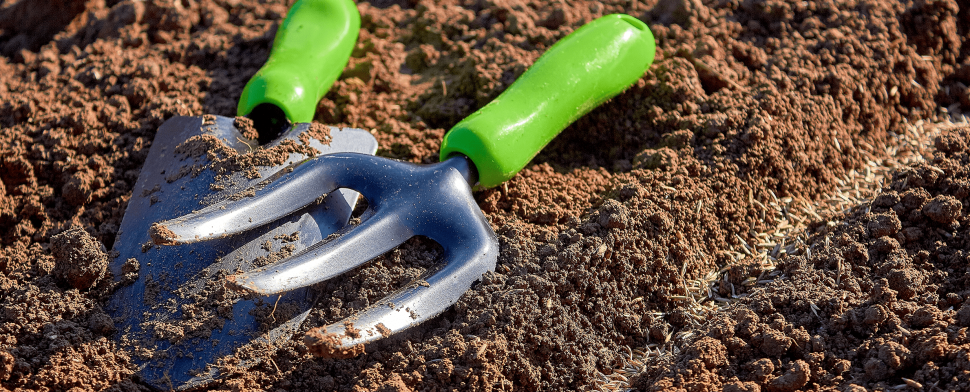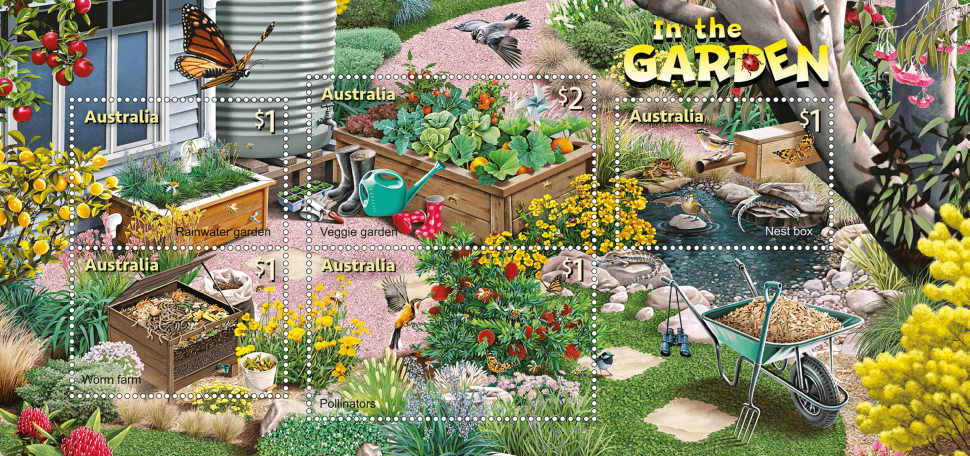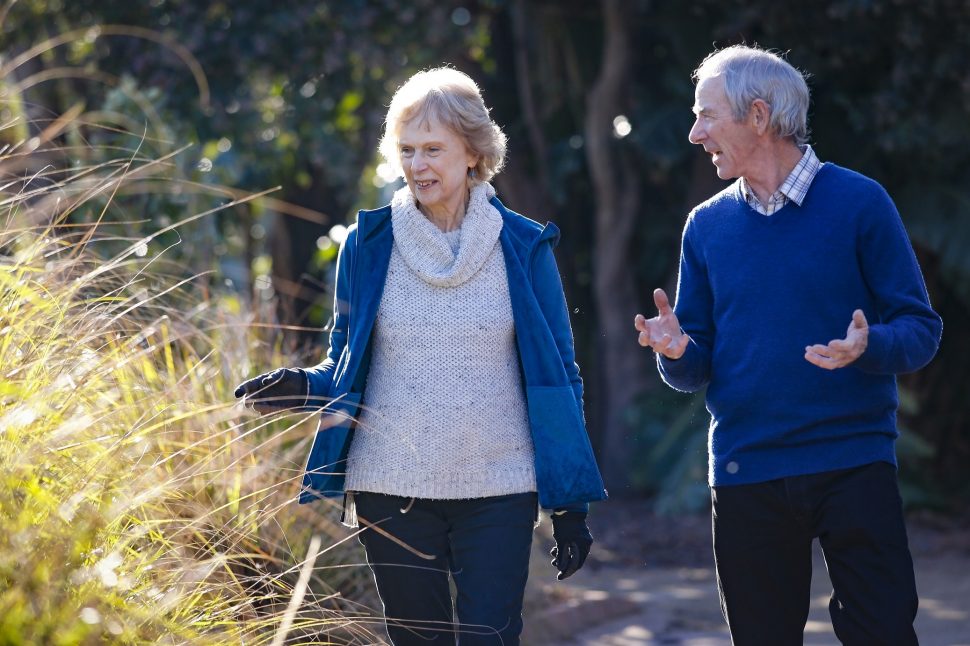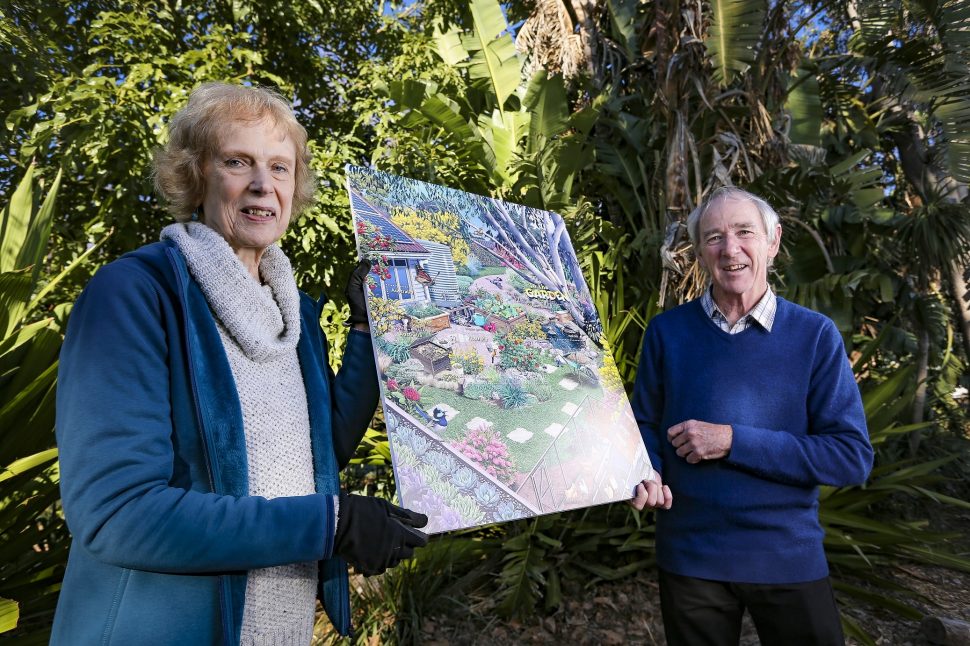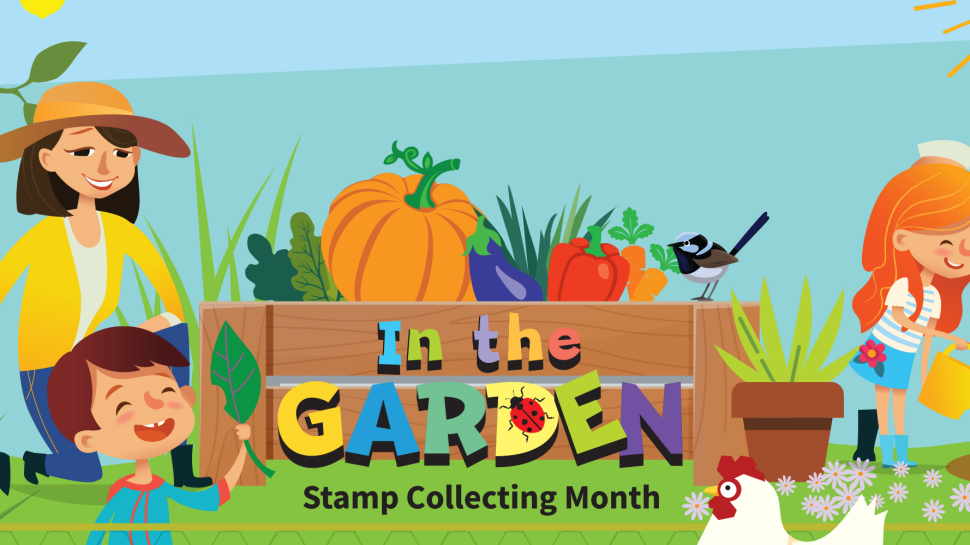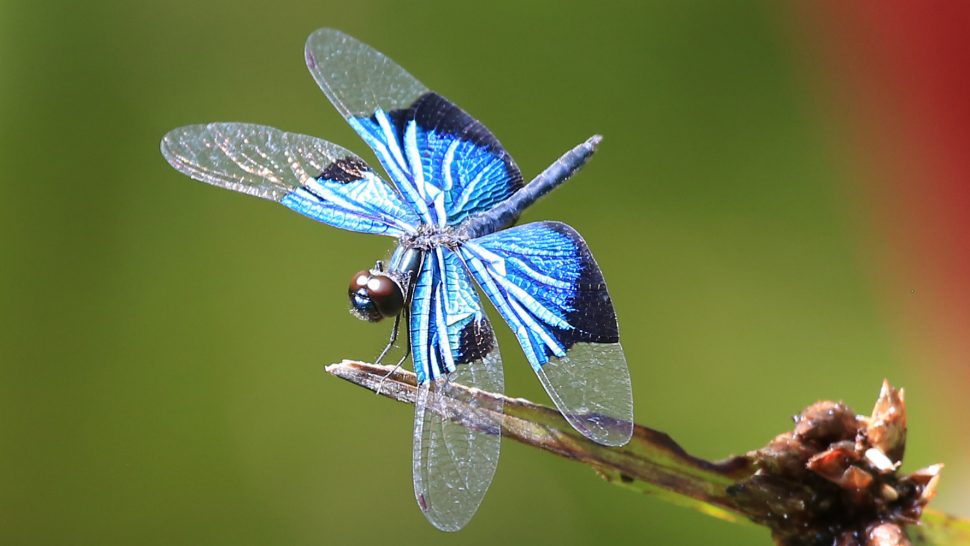Minimising environmental impacts is a focus for many parts of the community and this includes schools. In fact, many school teachers provided feedback that “sustainability” would be a suitable topic for Australia Post’s Stamp Collecting Month, because of its relevance to the curriculum and its potential to engage students with an interesting, topical and enjoyable theme. Stamp Collecting Month 2019 seeks to do just that – to present sustainable gardening in a fun and educational way through stamps. For collectors, it provides an opportunity to share a love of collecting with friends and family, especially children and grandchildren.
The “In the Garden” stamp issue, released on 1 August 2019, incorporates a range of sustainable gardening elements and activities across a large sheetlet that contains a minisheet of five stamps. The stamps feature a rainwater garden, which makes use of and purifies rainwater runoff; a veggie garden, to promote seasonal eating; a nest box, to protect small birds and other wildlife; a worm farm, to transform kitchen waste into valuable fertiliser; and pollinators, which are vital to ensuring plant growth and reproduction.
Assisting the researcher on this stamp issue were Dr Sharron Pfueller and Dr Gregory Moore from not-for-profit community organisation Sustainable Gardening Australia (SGA).
Sharron Pfueller has a PhD in biochemistry from the University of Adelaide and conducted research in in medical biochemistry at the Universities of Berne, Switzerland, and Monash University, Melbourne.
“I switched direction mid-career when I realised that human health is maintained by the health of the planet on which we depend. I gained qualifications in environment and sustainability and became Senior Lecturer in Environment and Sustainability at Monash University,” says Sharron.
Sharron joined SGA in around 2007, to work on assessing the human and environmental impacts of garden chemical products. Since her retirement, Sharron has become manager and President of the organisation.
“SGA works towards a healthy and biodiverse planet. So working in it combines my interests in health of both humans and the environment as well as in education,” says Sharron.
“My work provides the opportunity to educate people involved in gardening (there are around 9 million gardens in Australia) about reducing risky chemical control methods for pests and disease, developing strategies to address environmental problems like soil and water quality decline, climate change and biodiversity loss, and about how to grow local, healthy food,” adds Sharron.
Greg Moore is also now retired, but remains a Senior Research Associate with the University of Melbourne, Burnley. He was Principal of the Burnley campus, between 1988 and 2007, and Head of the School of Resource Management, from 2002 to 2007. Greg’s interests are in horticultural science, revegetation and ecology, specialising in arboriculture, and he has served with many arboriculture and sustainability organisations, including Greening Australia, and the National Trust’s Register of Significant Trees. Greg has written two books, five book chapters and 165 scientific papers and articles. He was awarded a Medal of the Order of Australia (OAM) in 2017 for services to the environment, particularly arboriculture.
“I was an inaugural member of SGA in 2003 and was particularly keen to do what I could for sustainable nursery and landscape industry practices. Having taught plant ecology for many years, the ideas of sustainable horticulture had great appeal and with the impacts climate change predicted, it seemed wise to do all that I could to promote sustainable work and horticultural practices,” adds Greg.
SGA grew out of a collaboration between Environs Victoria and Bulleen Art and Garden nursery. It became incorporated as an association in 2003 and, since then, has become a registered charity. SGA relies on grants and donations for funding and extensively on volunteers.
The key aims of the organisation are to achieve a healthy biodiverse planet, and vibrant, sustainable communities, by encouraging, educating and enabling home and professional gardeners to adopt sustainable gardening practices, and to educate and carry on research about the natural environment.
In pursuit of these aims, SGA has made many significant achievements, including running workshops and master classes on 34 different topics; developing a Garden Product Guide that rates more than 1,000 horticultural chemicals and products in terms of environmental impact; and developing the Green Gardening Professionals program, which brings together professional gardeners, landscapers and horticulturalist on a monthly basis, with an expert speaker, to assist with their professional development. Other programs include the environmental certification of more than 100 garden centres and landscape businesses as well as 12 public gardens. Plus, the SGA website contains a wealth of educational resources for everyone, from budding gardeners to professionals.
Both Sharron and Greg are passionate about igniting a passion for sustainable gardening in the community.
“Gardening is something that most people can do,” says Sharron.
“Gardening has personal benefits, such as improving general wellbeing and creating healthy food, as well as environmental benefits. These include helping to protect and enhance the natural environment, by minimising chemical use, which avoids the pollution of waterways or damage to beneficial organisms; using indigenous plants; increasing tree cover, which helps ameliorate the effects of global warming by sheltering houses and taking up carbon; and providing a habitat for wildlife,” says Sharron.
Greg and Sharron also see the larger environmental imperative of green spaces, both public and private.
“Front and back yards are vital to the future sustainability of Australian cities,” says Greg.
“We need their vegetated space to deal with a warming climate as tree canopy cover reduces the urban heat island effect (UHI) and a cover of about 30 per cent is required. This level of cover cannot be achieved using public open space alone, so sustainable home gardens are vital,” says Greg.
“With a reduction in rainfall comes the need for us to be water-efficient, but we must also recognise that some irrigation of green space may be required to achieve the many benefits and services that the green space provides. These benefits include improving human health and well-being and improving both the quality and longevity of peoples' lives,” adds Greg.
Greg is very pleased with the “In the Garden” stamps, product range and educational materials, having been interested in philately since he was a child.
“I think it is great to have a series on sustainable gardening, as it draws attention to sustainability at home as an important issue. I really like the supporting materials for schools. Any opportunity to promote sustainability in our society must be taken, as it affects the legacy that we leave for future generations. This is an important issue now, but will increase in importance as time goes by,” says Greg.
Here are Greg and Sharron’s top tips for adopting sustainable gardening practices in an existing garden:
- Make compost and add it to garden soil
- Don’t destroy the structure of the soil by standing on it
- Reduce the use of garden chemicals
- Plant local, native plants
- Use drip irrigation instead of hosing, and keep some areas as non-irrigation zones
- Avoid or replace hard surfaces with those that let water through, such as gravel
- Use your own plants for compost and mulch. It’s easy, cost-effective and sustainable
- Grow plants in large well-mulched beds (with mulch 75 to 100 millimetres deep)
- Large mulched beds are much more sustainable over time than small, narrow ones
- Choose the right plants and trees, such as nitrogen fixers, to improve both the organic and nutrient content of soils
- Don't remove trees prematurely - the longer their life spans the greater their contributions to sustainability
- A lawn that is 35 to 50 millimetres high will save water, reduce weed invasion and save on mower fuel
- A tree in the north or west of your home can save energy and money by cooling the house in summer
The In the Garden stamp issue is available from 1 August 2019, online, at participating Post Offices and via mail order on 1800 331 794, while stocks last.
View the gallery and technical details from this issue
Visit the Stamp Collecting Month 2019 website
View the Stamp Collecting Month 2019 video
To learn more about the work of Sustainable Gardening Australia, and to access gardening resources, visit their website.
This content was produced at the time of the stamp issue release date and will not be updated.
